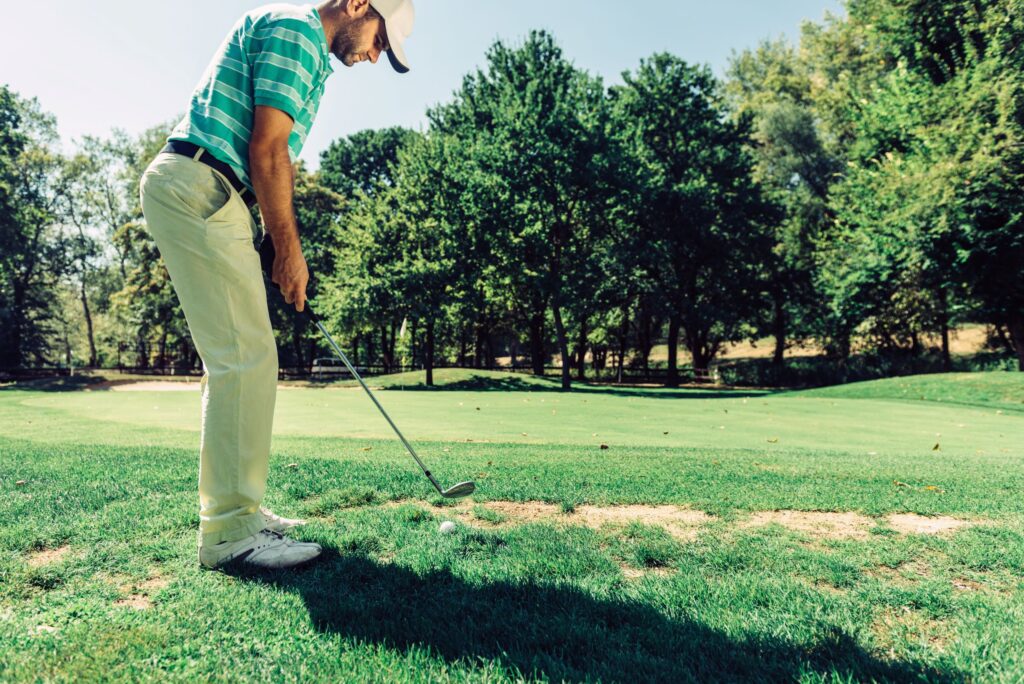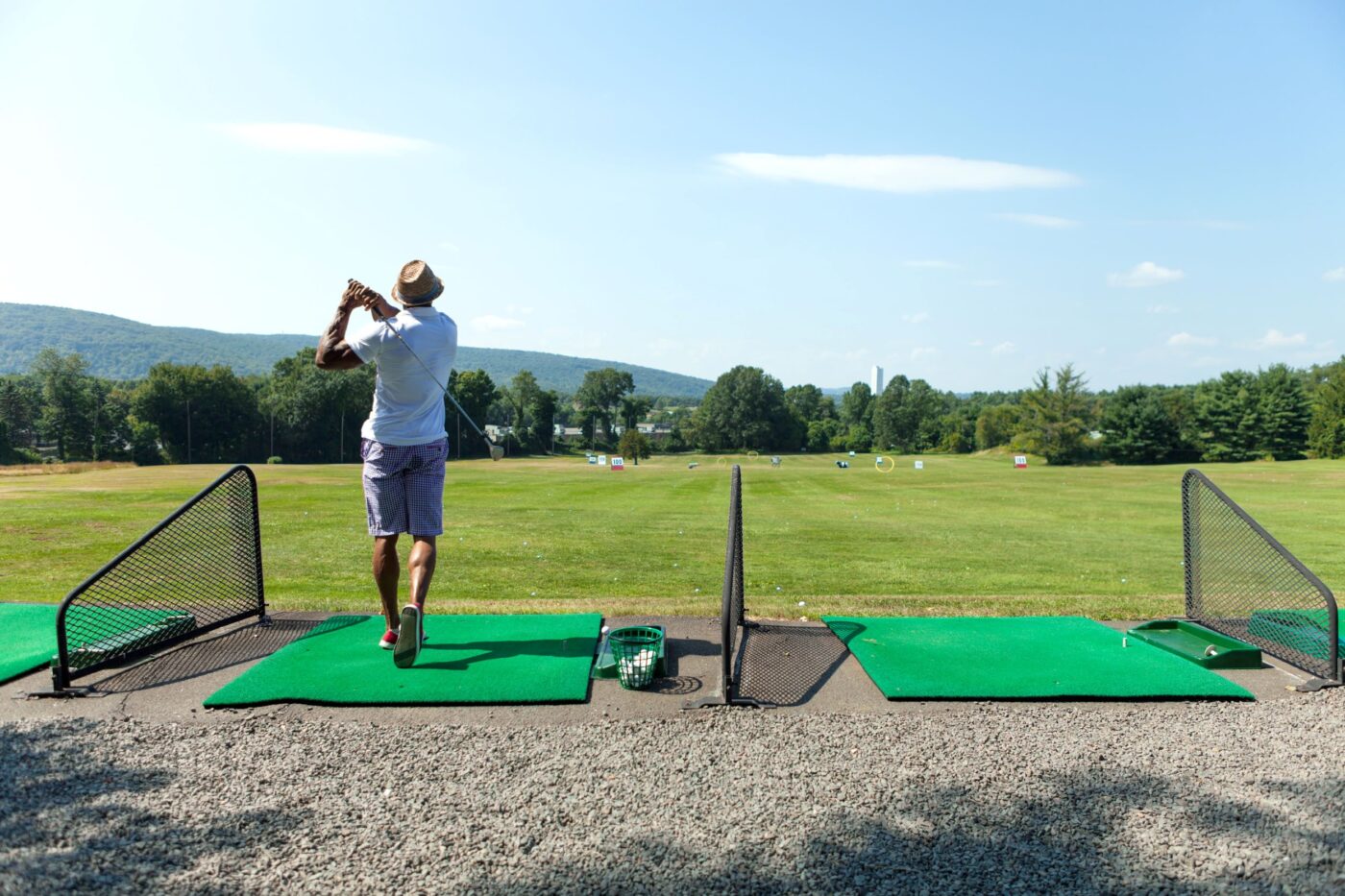How Often Should a Beginner Practice Golf? (Professional Advice)
How often should a beginner practice golf? How often you should practice depends on several factors that must first be considered, such as mindset, goals, and a good practice routine. Without these three key factors, a golfer will take considerably longer to get better at golf, especially from the beginner level.
How often a beginner golfer should practice is primarily determined by their availability and desire to improve. There is such a thing as practicing too much, and I would even go as far as to say that while still in the beginning stages of learning the game, it is best to air on the side of moderate practice and lean towards enjoying the game. If you’re not enjoying the pursuit of improvement and playing golf, it will not matter how often you practice because you will likely not stick with golf in the long term.
The Golfer’s Goal
Before a golfer can draft a plan to improve, they must first determine their goals for their game. For instance, if your goal as a golfer is to break 100 for a round of 18 holes, then your practice routine and the amount of time needed practicing will be different than a beginner golfer whose goal is to win their state amateur within the next few years.
When just starting in golf, it’s crucial to determine what you want to achieve; however, keep in mind that your goals may change as time goes on because as you improve, you may decide to take your golf game to the next level. Alternatively, if your goals are set high in the beginning, but you find yourself not enjoying the process and not having fun with the game anymore, you may decide to back off and adjust your goals accordingly.
Building a Solid Practice Routine
Having a solid practice routine means more than just picking up a golf club and hitting range balls. A good practice session incorporates all aspects of the game, including:
- Long game
- Short game
- Course management
Long Game
Although some golfers find success practicing the game from the green backward (short game emphasis), I believe a player’s greatest strength is their ability to put the ball in play, which is why I would argue the driver may be the most essential golf club in your bag, especially in the regards to the modern game that emphasizes swing speed and distance off the tee. Some of the best golfers of all time were great drivers of the golf ball, and even those who are just okay drivers of the golf ball play their best golf and win tournaments when they hit plenty of fairways.
The long game (120 yards plus) should take up approximately 40 to 50 percent of your practice time; however, I recommend spending 60 percent of that time practicing hitting the driver and 3-wood, as these are the clubs you will hit off the tee box the most often. You can spend the remaining 40 percent of your time hitting fairway wood, hybrid, and iron shots.
Short Game
The short game is a pivotal part of any player’s game and is known to separate good amateur golfers from professionals. The short game encompasses pitching, chipping, bunker shots, and putting. A golfer should practice the remaining 50 percent of the time available to practice, and depending on a player and their preference, putting should be practiced 10 to 25 percent of this time.

I keep my putting practice simple and usually spend about 10 to 15 percent of my available practice time on the putting green. The reason is that routine and speed are the most critical factors in putting, and generally, the more I practice putting, the worse I putt, which goes against many golf practice philosophies, but it works for me. However, I will occasionally dive deeper into my putting practice if I find a specific part lacking, such as hitting short putts from three and six feet.
Keep it Simple
My advice is to find what works best for your game and stick to your routine. If you find that your golf practice routine is more of a burden than enjoyment and you’re having a hard time sticking to it, then you would be better off switching it up and improving at a slower pace than not at all.
I always recommend finding a good instructor to help with your golf swing, short game, course management, and other aspects of your game. Golf lessons can be a game changer that leads to better golf, especially if you see a good golf instructor who knows how to take you from a beginner to a scratch golfer.
Course Management
Although it’s outside the realm of practice time and should not be included in your time spent “practicing,” course management is a pivotal part of the game you should take seriously if you want to improve your golf game.
The great thing about course management is it can be done while playing golf and is something you should be working on consistently, whether you’re playing a fun round of golf with friends or the most important round of your career in a tournament; course management is essential.
I won’t go into depth on course management in this writing; however, I will say that course management consists of strategically playing your way around a golf course while hitting the appropriate shot for each situation and sticking to your pre-round game plan.
For a more in-depth look at course management, check out my golf practice vs. playing time article.
The Right Mindset
Last but certainly not least, the right mindset will make all the difference in your pursuit of becoming a better golfer. Having a good mindset means learning to enjoy the process of improving and seeing the bigger picture in terms of end goals.

The right mindset can also encompass the mental side of golf, which is extremely important for improving and playing your best golf. However, although improving the mental side of your game is essential in your development as a golfer, in the beginning concentrating most of your efforts on the physical side of the game, such as the golf swing, will benefit your game the most. As your golf game improves, especially if you want to play golf at a competitive level, you can dive deeper into the mental aspect of the game. In the meantime, just having a good attitude and accepting that there will be bad shots along the way will work well enough because golf is a game of misses and takes patience.
Pro Tip
Try keeping a mental scorecard where you acknowledge and write down instances where your mental game was not as sharp—such as when you second-guess your pre-round game plan or find yourself doubting your abilities or golf swing.
Time Spent to Get Good at Golf
If all of the above factors are considered, and your schedule allows, having 3 to 4 practice days a week would be ideal. However, as previously stated, if you find yourself not enjoying the process of practice, it’s best to back off a bit and cut your practice plan down or take a break because playing golf is just as important, if not more important, than practicing golf in terms of playing the game in the long term. Enjoying golf is the whole reason we play in the first place.
It is also important to mention that golf is a constant pursuit, a journey without an end. Even the best golfers know that golf can never be perfected, only played. Tiger Woods is an excellent example of someone who continues to improve; even when he was at the peak of his game, he practiced consistently, knowing there was room for improvement.
Additionally, you may find yourself moving in the wrong direction, in which case I recommend getting a golf lesson from a good instructor capable of getting you on the right path.
Regardless of your strategy for improving golf, remember that golf is a game and is supposed to be fun, so the most important thing you can do as a golfer is to enjoy yourself on the course.
Good luck!








